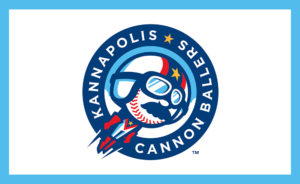Why is six afraid of seven?
In December of 2016, the White Sox put up an Open for Business sign for all of Major League Baseball to see. The rebuild had begun.
They acquired a myriad of prospects over the next year, and continue to trade away major league pieces in exchange for younger, higher ceiling, longer term talent. They signed Luis Robert to blow past International Amateur bonus limits. They’ve even been trading away international pool allotments for yet more young talent.
And young talent they have, in spades. Even after some recent matriculations, the White Sox farm has somewhere around 5 to 8 prospects among the top 100 in all of baseball, and one of the three or four deepest systems in the game. This doesn’t look to change anytime soon either. There is a good chance the team will trade more major leaguers for yet more prospects this offseason. The South Siders will have a top ten draft slot and most likely a full slate of picks in June of 2019. And in July of 2019 the team will be past their penalty phase in the foreign amateur market, which likely will result in going after some big name (and big bonus) talent from Latin America.
How things look today
Crowding is already a problem, especially at the lowest level. The Sox currently have two rookie league affiliates – the Great Falls Voyagers (Pioneer League, usually where they put the more polished, college-experienced or college-aged players) and the AZL White Sox (typically filled with younger players).
Now let’s look closely at how many games some of the key prospects actually played, leaving out players who missed time in blocks due to injury or starting late. We have a good example among the middle infielders with the AZL team, who play a 56-game slate. Here are the prospects who were contending for time in those two slots in 2018, and the number of games they were able to play:
- Camilo Quinteiro: 46
- Lency Delgado: 38
- Kelvin Maldonado: 38
- Brayant Nova: 24
None of these are org soldiers, and all but Quinteiro are listed as shortstops. Delgado was a 4th round pick in June, signed a little over slot at $525,000, and just missed our Top 30 Prospects list. Maldonado was taken in the 11th but signed for a pool-denting $175,000, which is an 8th round slot amount (50k hit to the pool). Quinteiro was inked for $300,000 a year ago, the max the team could offer one player during that period, as one of the two main prizes of the class for the Sox. Nova was one of the youngest 16-year-olds to sign with a club in 2015, with the Sox throwing a $100,000 bonus his way.
Obviously you can’t get four players full-season time (or even close) at two positions. So they all played some DH games, some played a few other positions, and all (to varying extents) just sat a bunch out.
This theme continues at other positions. AZL carried four catchers: Ty Greene ($75k bonus was highest paid to a catcher in the 2018 Sox class), Kleyder Sanchez (18-year-old called a “sleeper” by Ben Badler of Baseball America), Jose Colina ($450k bonus in 2014, 20 years old), and Gabriel Ortiz (19th round but a $50k bonus in June, prep pick). Greene played 33 games behind the plate. None of the others played more than 16 games at their home position – less than 30% of the season’s games. The outfield was five players plus short stints from higher-round draft picks that had to be worked in. You get the picture.
Leaving off rehabbers and cameos, the complex team also had 19 pitchers that needed innings, but admittedly pitchers are different and some were probably restricted on workload by design.
The other rookie affiliate, Great Falls, is really no different. There were five skill infielders that are all prospects (Lenyn Sosa, Amado Nunez, Bryce Bush, Maiker Feliz, Ramon Beltre) that were vying for time, plus other players. Three catchers including a 9th rounder and a high-bonus LatAm signee. And so on.
What can be done?
The Sox have six stateside minor league teams and one Dominican Summer League team. Seven total affiliates was the norm at one time, but not any longer – 20 of the 30 MLB clubs will enter 2019 with 8 or more affiliates (a few even have 9). As for stateside affiliates? Again, six was the norm, but by the beginning of next season, more than half the teams in baseball will carry at least seven. And here’s something to consider: the three farm systems that are currently ranked above the White Sox (at least according to Baseball America – San Diego, Tampa Bay and Toronto) all have seven US affiliates.
If Chicago’s American League club truly wants to go full bore on this rebuild and maximize the pool of young talent, then now – this offseason – is the time to add a 7th US affiliate (8th overall).
Such a move does have costs. Even with spreading out some existing talent, the club will need to fill some roster gaps with UDFA or other signees. Using their current average salary of $1100 a month (which is a whole different topic), adding 25 more players for four months gives you an added cost of $110,000 in player payroll expenditures, plus say another $50k for coaches. Add in some administrative and travel costs too, and non-salary player costs like health care, and $300,000 to $400,000 a year seems like a good ballpark number.
That’s the cost of one average 5th round pick, with the value-add of not only getting your prospects more development time, but adding yet more lottery ticket talent players who could turn into something. Doesn’t seem like a bad investment for what is a relatively small amount of money on the scale of an MLB club’s budget.
How would this work?
Where in the affiliated minors would the Sox put such a team? Given the Sox already have a complex league team, and a second rookie squad, the most logical placement is where the Sox haven’t fielded a team since the early 90’s – Class A Short Season. In theory, this is the level that sits between the rookie leagues and full season Class A (Kannapolis in this case). The two current short season A-ball circuits are the New York-Penn League (14 teams), and the Northwest League (8 teams). Using history as a guide, the Sox have previously fielded teams in Utica and Niagara (both in the NY-Penn League). The NWL would give the Voyagers a close “neighbor” that would be helpful for roster moves so that could work too.
Another possibility is to add a second complex league team. There are a handful of MLB organizations that run out two AZL teams, and the Sox could do that. The advantages include being closer to the team’s core facilities, and the fact that setup would be much less complicated than an independent affiliate. But this doesn’t allow for as many competition levels to select from, so you lose out on flexibility in the development curve.
There are some logistical issues to contend with. For one, they would need to find a willing affiliate and ballpark to host the team (assuming they don’t go the complex route). For another, if there are not both a stadium and a willing organization to contract with ready basically today, there may not be enough time to field the team by June of 2019. The league would need to approve as well. There may have to be another team involved to present an even number addition. The research and negotiation needed for this effort needs to start right away, if it has not already.
In the end this seems like the right investment at the right time (or perhaps even a year too late, but can’t do anything about that). The system is crowded enough to cause short-changing of development for real prospects, and will only get more crowded in the next couple years. The cost of the change is relatively low. If the Sox are truly looking to build the most powerful prospect plumbing possible, then it’s time to widen the pipes.
Want to know right away when we publish a new article? Type your email address in the box on the right-side bar (or at the bottom, if on a mobile device) and click the “create subscription” button. Our list is completely spam free, and you can opt out at any time.




I’ve heard around town that the newly built Impact Field home of the Independent league, Chicago Dogs, would “relish” the opportunity to house an affiliated team. What would the ramifications be for proximity to 2 MLB teams? And couldn’t they join the A league that the Kane County Cougars are in?
Oh I’m sure the Dogs would love to get a “taste” of affiliated ball. Sadly though that’s not in the cards for the White Sox. Their Class A Team in Kannapolis is about to get a new park, so I don’t think they are moving any time soon. And no rookie or short season leagues are in the midwest. The Cougars play in the Class A Midwest League.